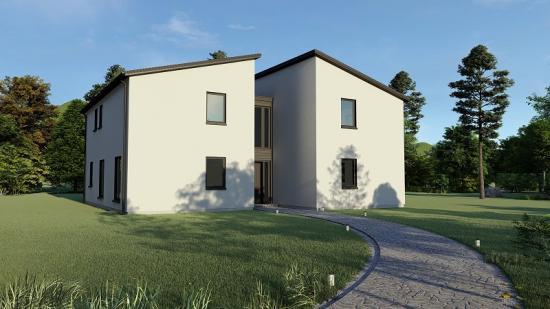Building Your New Home - Advice From Thermohaus
8th April 2020

One of the advantages of self-build is that it gives you a lot of flexibility over the method of construction. Some of the construction options are only open to the self-builder as no UK developers use them. The method you finally choose will be determined by a number of factors including:
Design Preference
Some construction methods are better suited to particular house designs than others. For example if you are looking to build a house with large open plan features then a steel frame construction will be preferable to traditional brick and block.
Budget
Obviously different methods of building have different costs per square metre of house floor area. The tighter your budget, the more restricted your choice of building method. Furthermore, if you require a mortgage, you may find that your lender restricts your construction options.
Location of Plot
Some plots, for example in Conservation areas or certain villages, may be severely restricted in terms of the house's appearance. So, your self-build will have to at least look similar to surrounding properties. This will clearly eliminate some choice of construction techniques.
Level of Your Input to Build
If you wish to build part or all of the property yourself, your construction choice will be limited to your competencies. Furthermore some options are only available on a ‘supply and build' basis.
Resale Issues
If you are concerned about being able to re-sell your property reasonably quickly at some point, you may wish to stick to more traditional building methods.
The main construction options open to you are:
Timber Frame
A very popular method of house building in Scotland where over 80% of all new house are built this way. It has been used and survived over centuries. It is very popular with self-builders due to its ease of construction. It allows a wide range of cosmetic design options from brick finishes to timber cladding.Thermohaus offers a premium product within this market which provides high levels of insulation and airtightness, making them extremely energy efficient.
Brick and Block
Generally constructed with an inner skin of concrete blocks, an outer skin of facing bricks and either or both a layer of insulation between the two / an inner insulated timber frame lining. A lot slower to build than timber frame and with less opportunity for the self-builder to get ‘hands-on'.
Steel Frame
Allows very open plan designs. This option will almost certainly require you to purchase a kit on a ‘supply and build' basis and your choice of design will be limited to those offered from the kit manufacturer. This can be combined with timber frame and brick and block construction.
Alternative Building Methods
These include Oak Frame, Cross Laminated Timber (CLT), Structured Insulated Panels (SIPs), and Insulated Concrete Formwork (ICF). However, some of these may be classified as non-standard construction by some mortgage lenders, restricting the availability of finance.
Eco Building
There is some cross-over with other methods (mentioned above) and specific eco-build systems such as straw bale. Mortgage options will definitely be restricted and you are likely to restrict your market when re-selling.
Warranties
Mortgage lenders generally require new homes to have a 10 year structural warranty. These warranties are essentially a 10 year insurance policy which covers the home owner against physical damage to the property caused by a defect which results from the builder failing to construct it to the required standards.
Most house builders are members of the National House-Building Council (NHBC) and offer their ‘Buildmark' warranty. Although NHBC were the founding providers of such warranties a number of alternatives exist for self-builders who may not be employing an NHBC registered builder.
Finally, there's the ‘Architect's Certificate' more correctly known as the Professional Consultant's Certificate. This option differs from the others in so far as cover is usually provided by the practitioners personal professional indemnity insurance. For further information visit the [url=https://www.cml.org.uk/lenders-handbook/pcc/]Council of Mortgage Lenders (CML) website[/url]
See other articles in the advice series from Thermohaus.
Planning Advice and Building Warrant
House Design Advice From Thermohaus
Finding And Buying Land For Your Self Build Home
Building Your Own Home Is Easier Than You May Think
Can You Afford To Build Your Own Home
How to Finance Your Self-build New home]
Related Businesses
Related Articles
